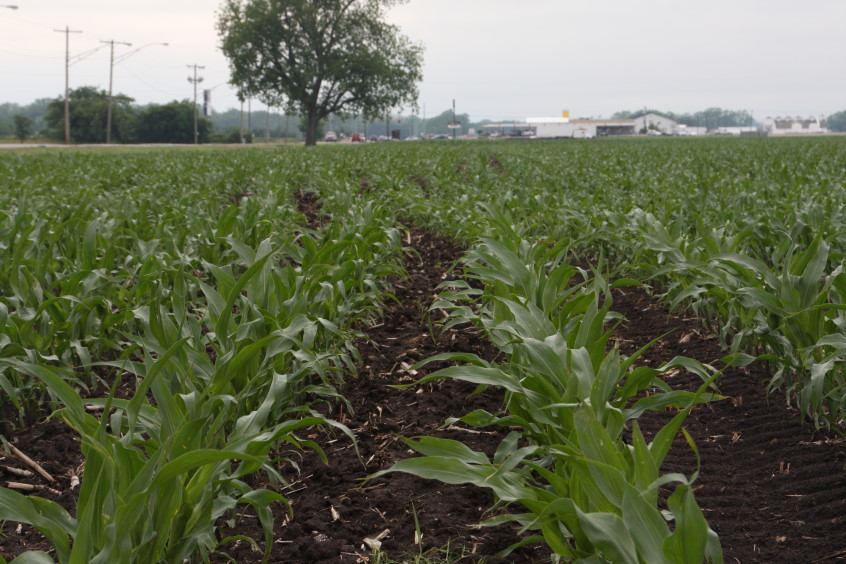
Agricultural News
World Grain Production on the Rise Despite Slump of 2010
Tue, 29 Nov 2011 13:13:13 CST
 World grain production fell, exacerbating a global food situation already plagued by rising prices, according to new research published by the Worldwatch Institute for its Vital Signs Online publication. Despite record rice and maize yields around the world, global wheat production dropped substantially enough to bring total grain output to just below 2008 levels.
World grain production fell, exacerbating a global food situation already plagued by rising prices, according to new research published by the Worldwatch Institute for its Vital Signs Online publication. Despite record rice and maize yields around the world, global wheat production dropped substantially enough to bring total grain output to just below 2008 levels.
Maize, wheat, and rice provide nearly two-thirds of the global human diet and serve as critical inputs for both animal feed and industrial products. The significance of these crops guarantees that a decline in production will produce ripple effects throughout the global economy, particularly as increased food prices continue to take a toll on the world's neediest populations. Overall, rice and wheat production have tripled since the 1960s, and maize production has quadrupled, despite global acreage of these crops increasing by only 35 percent.
Nevertheless, preliminary data for 2011 indicate that grain production is recovering from the 2010 slump. The United Nations Food and Agriculture Organization (FAO) recently forecast that cereal output in 2011-12 will be 3 percent higher than in 2010-11.
"Grain remains the foundation of the world's diet, and the failure of harvests in recent years to keep pace with growth in meat consumption and population is worrisome," said Worldwatch President Robert Engelman. "It's important that we identify and implement more inventive and sustainable strategies in grain production. Reducing the proportion of grain harvests lost to weather disasters and waste or diverted for corn ethanol production and animal feed is among such strategies. It's also important that we prioritize grain availability for those who need it most."
Recent growth in agricultural production has been uneven. In many regions, climate change has brought irregular weather patterns such as rising temperatures, violent storms, and flash flooding. In Russia, where severe drought has plagued large farming regions, overall wheat yields plunged 40 percent in 2010, compared to a decline of only 5 percent worldwide. Subsequently, Russia----the fourth largest wheat exporter in 2009----banned all wheat exports, severely disrupting world grain markets. Poor weather took its toll elsewhere as well: El Niño in the west Pacific, for example, brought rice production down significantly in the Philippines, already the world's largest food importer.
Rising demand for ethanol fuel, which in the United States is produced almost exclusively from corn feedstock, is having an impact on grain prices as well. "According to the CBO, about 20 percent of the increase in maize prices between 2007 and 2008 was due to domestic ethanol demand," said contributing researcher Richard Weil. Demand for grains is also rising in countries such as China and India, where growing middle classes are adopting more diverse diets.
"Farming has always been an uncertain business that depends in large part on the weather, and it could be entering an even more difficult phase," said Weil. "As the global climate changes, the warmer, less stable atmospheric conditions could be detrimental for food production." In an already fragile economy, continued volatile prices and unpredictable weather-induced shortages are sure to negatively affect both producers and consumers in developing countries.
Further highlights from the research:
-Between 1960 and 2010, annual global grain production increased from 643 million tons to 2.2 billion tons.
-U.S. maize (corn) production was down 5 percent in 2010 due to drought in the east and excessive rain in the west. The United States is the world's largest exporter of maize, accounting for 56 percent of global exports from 2006 to 2010.
-According to the FAO's Cereal Price Index (CPI), which uses 2002-04 prices for wheat, rice and maize as its baseline (100), food prices increased to an index level of 185 in August 2010 and set a record at 265 in April 2011.
-Forty percent of the global increase in maize prices in 2000-07 was due to worldwide demand for ethanol, according to the International Food Policy Research Institute.
Additional reasons for the jump in food prices include the weakening of the U.S. dollar, speculation on grain prices, and possible climate change impacts.
Stanford University researchers who created a model to determine how changing weather patterns affect crop yields found a 2.9 percent increase in global rice production as a result of greater precipitation, but losses of 3.8 percent for wheat and 2.5 percent for maize.
WebReadyTM Powered by WireReady® NSI
Top Agricultural News
More Headlines...




















